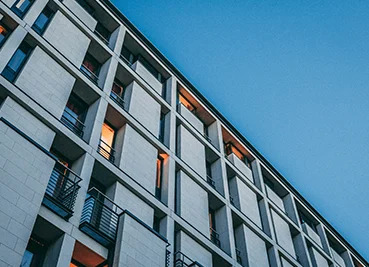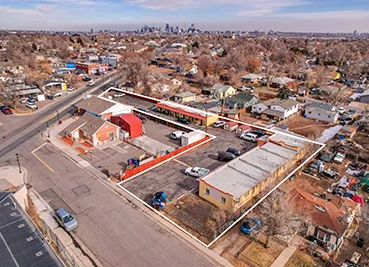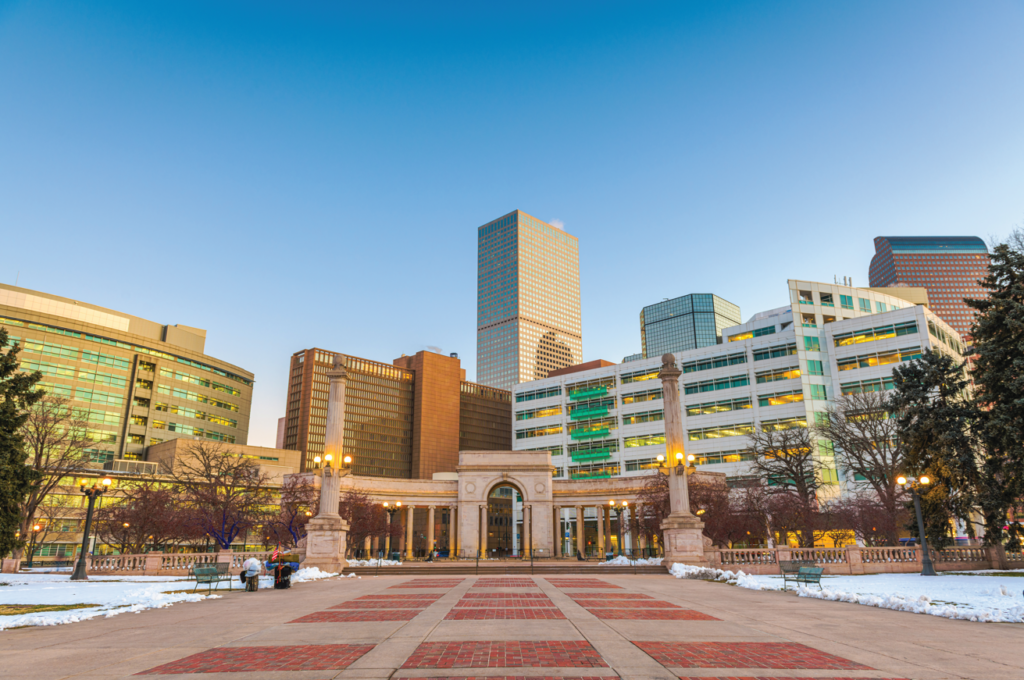
Domestic Net Migration Contracts, but Foreign Migration and Natural Increase Outpace These Losses.
The 10-county metropolitan area added 8,038 residents between July 2021 and July 2022, according to the latest data from the U.S. Census Bureau. While Denver’s population continues to grow, nearing 3 million people, the most recent 0.3% annual increase is down significantly from the average annual increase of 2% observed in the decade leading up to the pandemic.
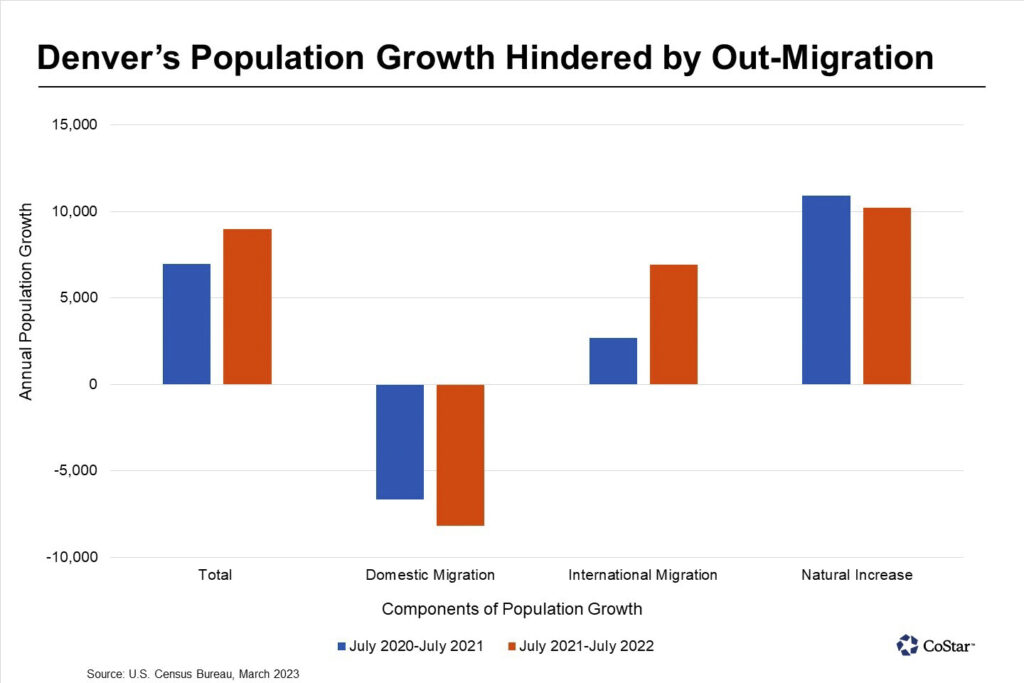
Most noticeably, domestic net migration has contracted for the past two consecutive years, as Denver lost residents to other areas of Colorado and to other states.
Net domestic out-migration amounted to a loss of 14,840 residents in the two years between July 2020 and July 2022. However, foreign migration in combination with the natural increase, or the birth rate minus the death rate, outpaced these losses, resulting in a net population gain of 15,949 people during this time.
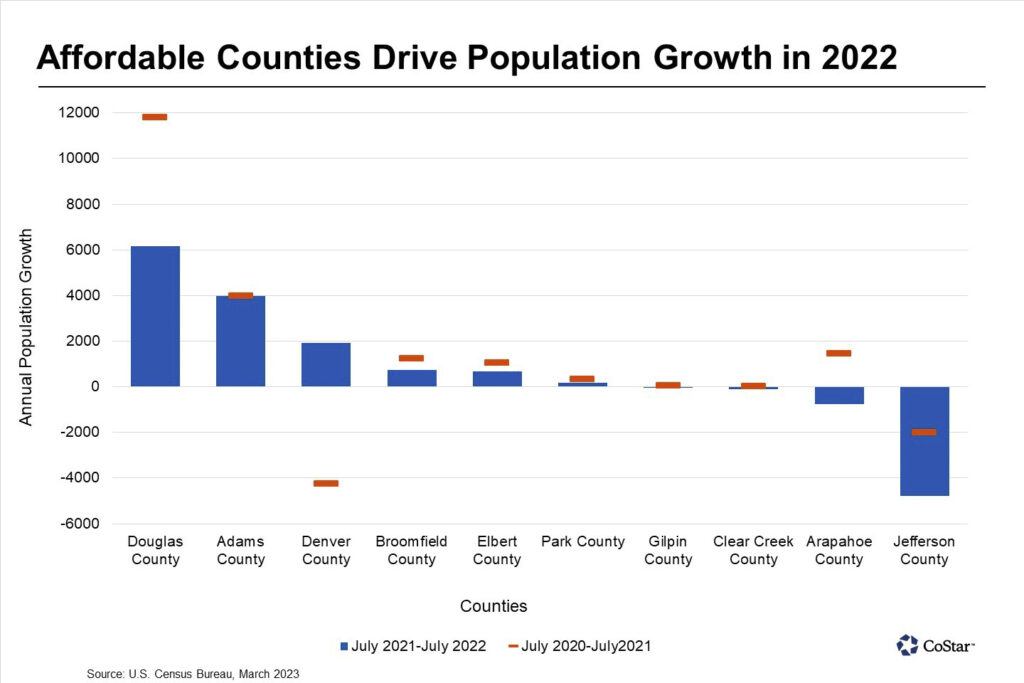
Denver County, home to the city’s urban core, experienced a slight rebound in population growth in the last year, adding 1,929 people for a growth rate of 0.3%. Denver’s most populous county now has 713,252 residents.
Downtown Denver features one of the most robust apartment construction pipelines in the country with 30,000 units under construction, giving residents plenty of options when moving to the Mile High City. Concession activity, such as a free month’s rent, has risen in the urban core due to the increased availability of units, which could spur additional people to make the move downtown.
In a time of high inflation and an uncertain economic outlook, affordable counties outperformed in population growth. Suburban Douglas County was the clear population growth leader in the past two years, adding 17,790 residents between July 2020 and July 2022. The county has excellent public schools and has experienced an uptick in affordable single-family housing construction, attracting many young families from other areas of the city.
Adams County, the second-most populous county in the metropolitan area, also experienced a sizable population increase, adding 3,983 residents in the last year. Affordable housing is a major draw to the area.
While population growth has slowed in Denver in recent years, this comes on the heels of decades of explosive in-migration. The population growth rate has consistently outpaced the national rate in every decade dating back to the 1930s. The recent slowdown could point to a steadier state of growth for the metropolitan area going forward.so many economists are against the idea of widespread rent control.


